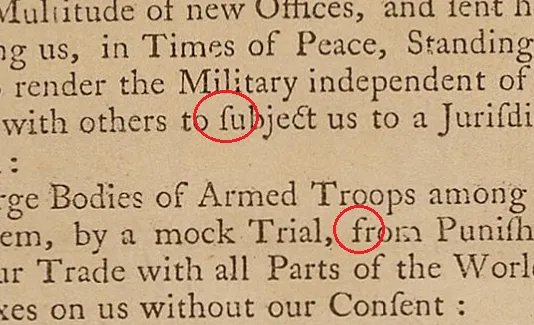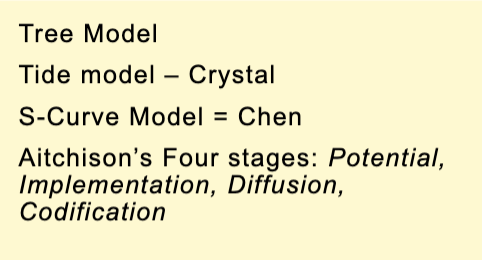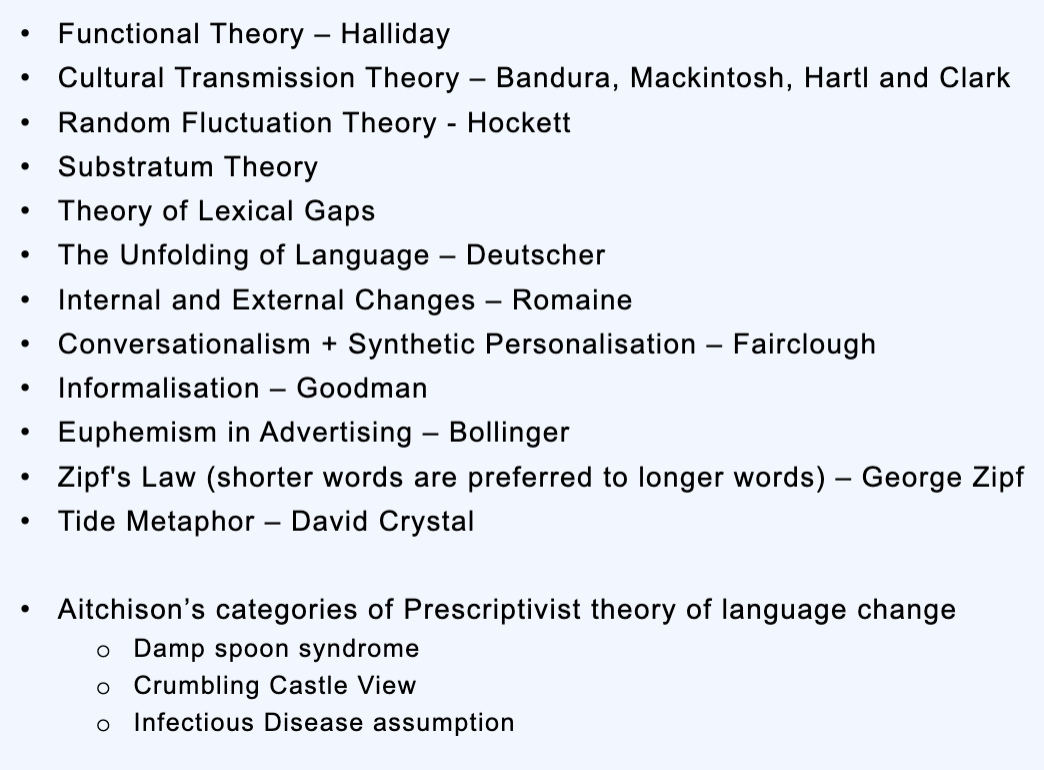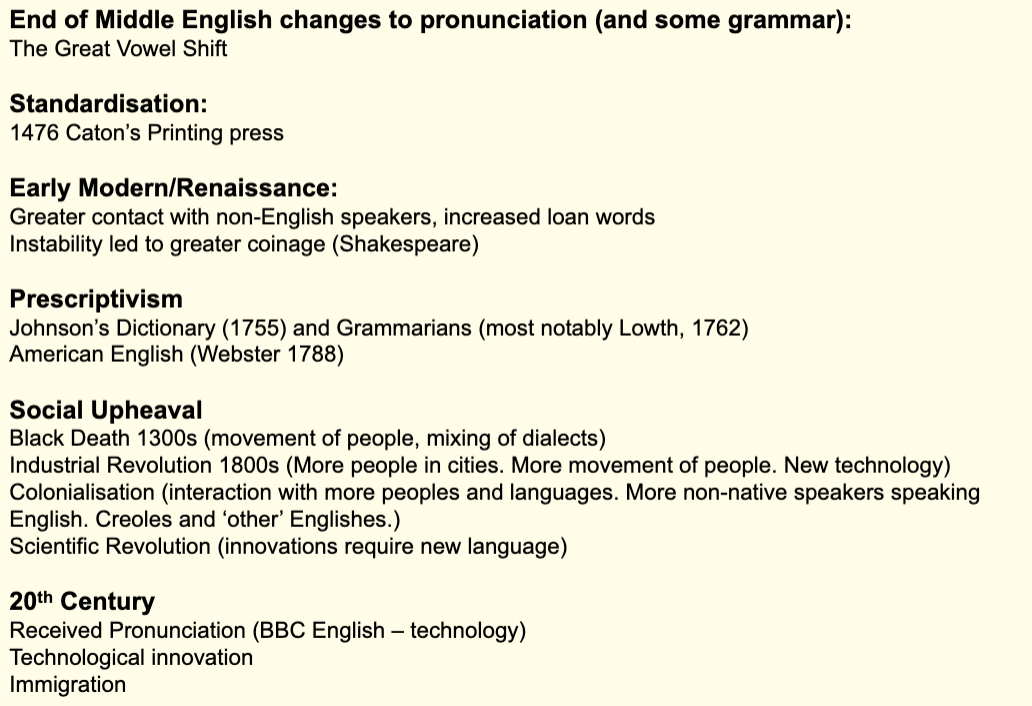Language Change (general) - A Level English
1/32
Earn XP
Description and Tags
9093
Name | Mastery | Learn | Test | Matching | Spaced |
|---|
No study sessions yet.
33 Terms
Semantic Change
Changes to what words mean, imply, or are used for
Semantic Broadening
Where the meaning of a word becomes broader or more inclusive than its earlier meaning (e.g. the earlier meaning of dog referred to a specific breed of dog rather than the whole species)
Semantic Narrowing
When the meaning of a word becomes narrower or more limited than its earlier meaning (e.g. the earlier form of meat originally referred to all food but now generally only refers to food in the form of animal flesh)
Amelioration
Where a word takes on a more positive connotation over time (e.g. nice originally meant foolish)
Pejoration
Where a word takes on a more negative connotation over time (e.g. vulgar originally meant common or of the people).
Archaisms
A word which is no longer in everyday use, or has lost a particular meaning in current usage
Obsolescence
In language, relates to words which are no longer in use and often no longer understood
Lexical Change
Changes to the words we have available to use
Coinage
The creation of new words (i.e. neologisms) in a language
Types of Abbreviation
Acronyms, Clipping, and Initialisms
Acronyms
A word formed from the initial letters of two or more successive words (e.g. UNESCO: United Nations Educational, Scientific and Cultural Organisation), pronounced as a word instead of letter by letter
Clipping
Where a word is shortened to form a new variant (e.g. advertisement becomes ad or advert)
Initialisms
A type of abbreviation consisting of initial letters from a series of words, pronounced letter by letter, such as USA for "United States of America"
Borrowing/Loan Words
Introducing specific words or forms of words from one language into another (e.g. pasta from Italian into English, or weekend from English into French)
Nonce Words
Complete inventions without a clear rule (e.g. fleek, bling, and quark)
Compounding
Forming a word from two or more units that are themselves words (e.g. whiteboard from white and board)
Conversion
Creating a new word by using an existing word in a different word class (e.g. the noun green in golf was converted from the adjective green)
Eponym
The name of something that is also the name of someone credited with inventing or discovering it (e.g. cheddar, Alzheimer’s)
Back Formation
Removing a prefix or suffix to form a different form of speech from the original word (e.g. enthuse from the noun enthusiasm and liaise from the noun liaison)
Derivation
Creating a new word from an existing word, often with the addition of a prefix or suffix (e.g. unwilling derives from will with the prefix un- and the suffix -ing)
Portmanteau
Forming a new word by combining the beginning of one word with the end of another (e.g. motel from motor and hotel)
Grammatical/Syntactic Change
How word order and sentence construction change
Inflection
The alteration of a word to express different grammatical categories such as tense, mood, voice, aspect, person, number, gender, and case (e.g. walked from walk). Inflection for verbs is Conjugation, and for nouns is Declension
Orthographic Change
Changes to our systems of spelling and punctuation
Standardisation/Codification
The process of establishing a uniform set of norms, rules, and conventions in language, particularly regarding grammar, spelling, and usage
Non-standard
forms of language that deviate from established norms or standards, often used in specific social or regional contexts
Graphological Change
Changes in the visual representation of language, including handwriting, font, and layout
Long-S
An alphabetical character that resembles the number 'f' and was commonly used in English printing until the 19th century, notably in the context of formal writing

Phonetic Change
Changes in the sounds and pronunciation of words
Theories to describe Language Change Data
Tree Model, Crystal’s Tide model, Chen’s S-Curve model, and Aitchison’s Four Stages (PIDC).

Theories for Why and How Language Changes

Historical and Social Changes that led to Language Change
Shifts in society, culture, technology, and politics that influence the evolution of language over time, impacting vocabulary, grammar, and usage.

AOs for Paper 3 Q1
AO2 - 5 marks,
AO4 - 5 marks
AO5 - 15 marks